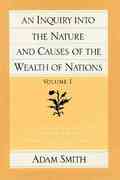please answer this
Exit Slip: Module 25 1. Which of the following would be the initial effect of an individual making a $10,000 cash deposit in a bank? . The money supply would rise by $10,000. B. The money supply would fall by $10,000. C. The money supply is not be affected by the deposit. D. The money supply would fall, but by less than the $10,000 deposit. E. The money supply would rise by more than $10,000. 1: 2. First National Bank has $80 million in checkable deposits, $15 million in deposits with the Federal Reserve, $5 million cash in the bank vault and $5 million in government bonds. Consider the information for First National Bank. If the reserve ratio is 20%, what are the excess reserves available for the bank to lend? A. $76 million B. $55 million C. $68 million D. $20 million E. $16 million 3. Suppose your grandma sends you $100 for your birthday and you deposit $100 into your checking account at the local bank. The reserve ratio is 10%. Based upon this deposit, the bank's excess reserves have increased by and, if the bank lends all excess reserves, the money supply could eventually grow by as much as A. $90; $1000 B. $100; $900 C. $90; $900 D. $100; $1000 E. $10; $1000 Exit Slip: Module 26 l. The Federal Reserve System is the for the United States. A. government entity that collects taxes. B. government-owned bank C. U.S. Treasury Bank D. largest private banking corporation in the world. E. central bank 2. How long is the term for each governor on the Federal Reserve Board? A. 4 years B. 8 years C. 12 years D. 14 years E. 16 years 3. What is the Federal Reserve's most important function? . Issue money B. Conduct monetary policy C. Maintain nancial stability D. E. :p Regulate the banking system Act as the banker for the US. government Exit Slip: Module 27 1. Suppose the Federal Reserve were to engage in open-market operations by buying $100 million of US. Treasury bills. Which of the following would be the end result of such an action? > B. C. D. E. The money supply would stay the same. The money supply would decrease by $100 million. The money supply would increase by $100 million. The money supply would increase by more than $100 million. The money supply would increase, but by less than $100 million. 2. When the Fed decreases bank's reserves through an open-market operation: A. B. C. D. E. deposits increase, currency in circulation increases, and the monetary base remains the same. the monetary base decreases, the money multiplier decreases, and the money supply increases. loans increase, the federal funds rate rises, and the discount rate rises. the monetary base decreases, loans decrease, and the money supply decreases. the monetary base decreases, loans decrease, and the money multiplier decreases. 3. When a bank borrows from the Federal Reserve, it pays the i} B. C. D. E. required reserve ratio. discount rate. federal funds rate. prime rate. mortgage rate. Exit Slip: Module 28 1. If a checking account has an interest rate of 1% and a government Treasury bill has an interest rate of 3%, the opportunity cost of holding cash in your wallet is: A. zero. B. 0.02%. C. 1%. D. 2%. E. 3%. 2. The demand for money is negatively related to and positively related to . the interest rate; real GDP the interest rate; unemployment real GDP; the interest rate . real GDP; the money supply the ination rate; the interest rate meow 3. An increase in the demand for money would result from: a decrease in nominal GDP. a decrease in real GDP. a decrease in the price level. an increase in the price level. an increase in the unemployment rate. FLOOD\"? 1. Exit Slip: Module 29 At a rate of 5%, investors want to borrow $100 million from the loanable funds market and savers want to provide $125 million to the loanable funds market. We would expect: . the interest rate to fall as there is currently a shortage of loanable funds. B. the interest rate to rise as there is currently a surplus of loanable funds. C. the interest rate to rise as there is currently a shortage of loanable funds. D. the interest rate to fall as there is currently a surplus of loanable funds. E. the interest rate to remain the same as the loanable funds market is in equilibrium. I> $100 Quantity of Loanable Funds (billions of dollars) The graph above shows the market for loanable funds in equilibrium. Which of the following might produce a new equilibrium interest rate of 8% and a new equilibrium quantity of loanable funds of $150? . Consumers have decreased consumption as a fraction of disposable income. B. Businesses have become more optimistic about the return on investment spending. C. The federal government has a budget surplus rather than a budget decit. D. E. > There has been an increase in capital inows from other nations. Forecasts for future corporate prots are gloomier than expected. Crowding out negatively can affect the economy by: decreasing government borrowing. decreasing consumption. increasing private borrowing. reducing investment spending on physical capital. decreasing government decits. mung











